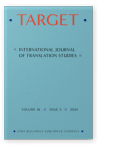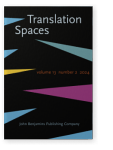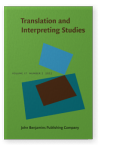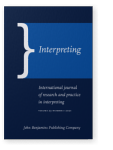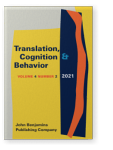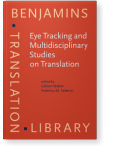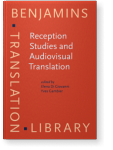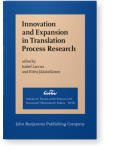Stephen Doherty
List of John Benjamins publications for which Stephen Doherty plays a role.
Journal
2024 An eye-tracking study on the cognitive processing, reception, and perception of swearword translation in films Translation Spaces 13:2, pp. 293–329 | Article
Technological advances lead to an increasing array of widely accessible online audiovisual (AV) products. However, translating these AV products poses challenges, especially for culturally sensitive content like swearwords. Using eye-tracking, this study investigates how audiences cognitively… read more
2022 The effects of mode on interpreting performance in a simulated police interview Translation and Interpreting Studies 17:2, pp. 264–286 | Article
This study tested the effects of the consecutive and simultaneous interpreting modes in a simulated police interview, addressing four research questions: (1) Does the consecutive interpreting mode lead to more accurate interpreting than the simultaneous interpreting mode? (2) Do language… read more
2021 Reading patterns and cognitive processing in an eye-tracking study of note-reading in consecutive interpreting Interpreting 23:1, pp. 76–102 | Article
This article reports on the eye-tracking data collected from 18 professional interpreters while they performed consecutive interpreting with notes. It is a pioneering study in its visualisation of the way in which note-reading occurs. Preliminary evidence suggests that note-reading proceeds in a… read more
2021 Introduction: Advancing experimental research in audiovisual translation Translation, Cognition & Behavior 4:2, pp. 244–252 | Introduction
2021 The ‘hookability’ of multimodal impact captions: A mixed-methods exploratory study of Japanese TV viewers Translation, Cognition & Behavior 4:2, pp. 253–280 | Article
The use of captions has grown in recent years in both traditional and new media, particularly in terms of the diversity of style, content, and function. Impact captions have emerged as a popular form of captions for hearing viewers and contain rich multimodal information which is employed to… read more
2018 Chapter 5. Analysing variable relationships and time-course data in eye-tracking studies of translation processes and products Eye Tracking and Multidisciplinary Studies on Translation, Walker, Callum and Federico M. Federici (eds.), pp. 71–94 | Chapter
Eye tracking has become a central research method in quantitative approaches in Translation Studies over the past decade. While the number of such studies is growing, methodological limitations have arisen in the application of eye tracking to the study of translation processes and their products.… read more
2018 Triangulation of online and offline measures of processing and reception in AVT Reception Studies and Audiovisual Translation, Di Giovanni, Elena and Yves Gambier (eds.), pp. 91–109 | Chapter
This chapter reviews methodologies for investigating the cognitive processing of audiovisual translation products using the triangulation of physiological, psychometric and performance measures. It also provides an analysis of the strengths and limitations of these measures to offer a synthesis of… read more
2018 Chapter 12. Multimodal measurement of cognitive load during subtitle processing: Same-language subtitles for foreign-language viewers Innovation and Expansion in Translation Process Research, Lacruz, Isabel and Riitta Jääskeläinen (eds.), pp. 267–294 | Chapter
This chapter presents the findings of a multimodal study that combines a suite of methods, namely, eye tracking, electroencephalography, and self-reported psychometrics, to investigate the impact of language and layout on cognitive load in the absence and presence of conventional same-language… read more
2016 Towards a cognitive audiovisual translatology: subtitles and embodied cognition Reembedding Translation Process Research, Muñoz Martín, Ricardo (ed.), pp. 171–194 | Article
This chapter presents the findings of a study to investigate the impact of subtitles on the processing of audiovisual texts in terms of levels of self-reported engagement with the text. It also presents a methodology for investigating the neural processing of subtitles using electroencephalography… read more
